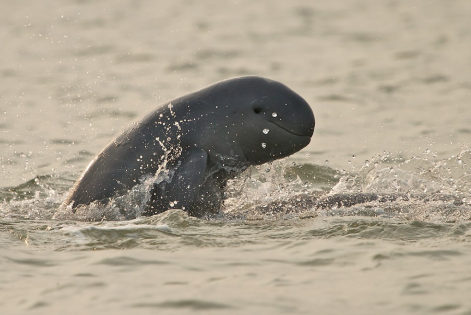

Bhubaneswar: Along Odisha's pristine coastline, where the Bay of Bengal kisses the golden shores, a desperate race against time unfolds every winter. Here, at Gahirmatha and Rushikulya beaches, hundreds of thousands of Olive Ridley turtles once performed their ancient arribada—mass nesting ritual. Today, their numbers dwindle at an alarming rate.
"Ten years ago, we counted over 600,000 nesting females. Last season, barely 120,000 arrived," says Bijay Kumar Kabi, a local conservationist who has dedicated his life to protecting these marine creatures. "At this rate, we might lose them entirely within two decades."
Odisha's wildlife—from its iconic Bengal tigers to its lesser-known pangolins—stands at the brink of extinction, threatened by a perfect storm of climate change, habitat destruction, and human encroachment.
The story repeats across Odisha's diverse landscapes. In the mangrove forests of Bhitarkanika, the endangered saltwater crocodile population has declined by 30% in just five years. The Bengal tiger, which once prowled freely through Similipal and Satkosia reserves, now numbers fewer than 40 across the state.
Expert Insight: "We're not just losing species; we're losing entire ecosystems and the services they provide," explains Dr. Anand Das of the Wildlife Conservation Society of India. "Many of these species took millions of years to evolve but might disappear within our lifetime."
Perhaps most alarming is the status of the Irrawaddy dolphin in Chilika Lake, Asia's largest brackish water lagoon. Once home to hundreds, only 156 individuals remain, with scientists predicting possible extinction by 2040 if current trends continue.
What's driving this extinction crisis? Wildlife biologist Sasmita Lenka points to three primary factors:
"First, habitat fragmentation has isolated populations, making them vulnerable to genetic bottlenecks. Second, climate change is altering weather patterns critical for breeding cycles. Finally, despite strict laws, poaching continues to decimate already vulnerable species."
The Asian elephant, Odisha's state animal, illustrates this tragic confluence of threats. As forests shrink, human-elephant conflicts increase, resulting in deaths on both sides. Rising temperatures affect water availability and food sources, while poaching for ivory persists despite global bans.
Local Perspective: "My grandmother told stories of elephant herds a hundred strong passing through our village," recalls Pratap Mohanty from Chandaka. "Now we see small, scared groups of 8-10, and even those are becoming rare."
While flagship species receive attention, lesser-known creatures face equal or greater danger. The Indian pangolin, heavily poached for its scales, has virtually disappeared from areas where it was once common. The fishing cat, perfectly adapted to Odisha's wetlands, loses habitat daily to agricultural expansion and aquaculture.
The gharial, a fish-eating crocodilian found in the Mahanadi River system, now numbers fewer than 20 in the wild in Odisha, with reproduction rates plummeting due to sand mining and dam construction that destroy nesting sites.
Despite these grim realities, conservation efforts show promise. Community-based sea turtle protection programs have reduced poaching by 70% in participating villages. The Similipal Tiger Reserve has implemented innovative anti-poaching measures using AI-powered cameras and local tribal knowledge.
Success Story: "We've proven that when local communities benefit from conservation, they become its strongest advocates," says Manasi Swain, who leads a women's conservation collective in Mangalajodi wetlands. Their ecotourism initiative has transformed former bird hunters into passionate guardians.
As the sun sets over Odisha's diverse landscapes, the question remains: Will these iconic species survive to see the dawn of the next generation? The answer lies not just in policy and protection but in humanity's willingness to recognize the true value of wild things beyond their economic worth.